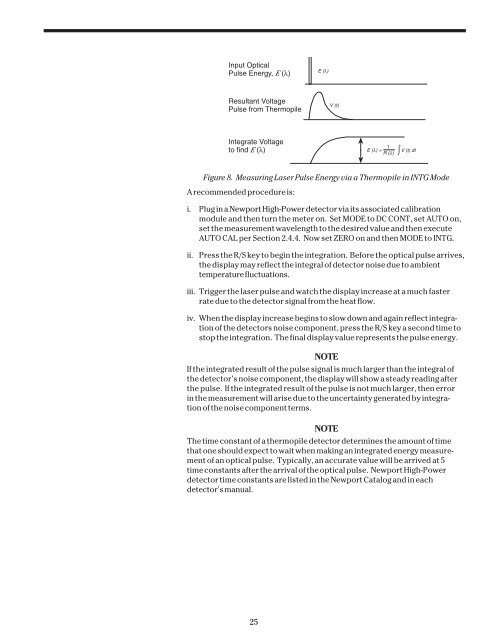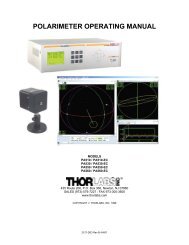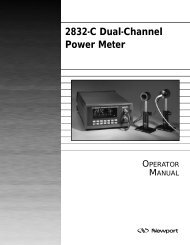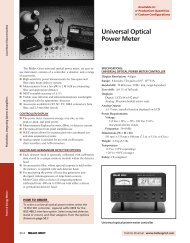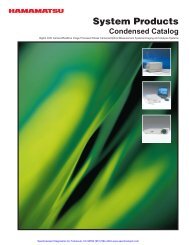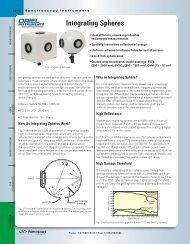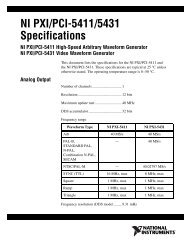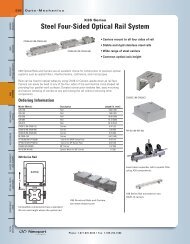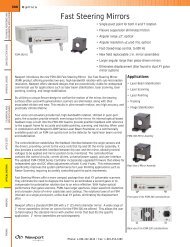Model 1835-C - Newport Corporation
Model 1835-C - Newport Corporation
Model 1835-C - Newport Corporation
You also want an ePaper? Increase the reach of your titles
YUMPU automatically turns print PDFs into web optimized ePapers that Google loves.
Input Optical<br />
Pulse Energy, E (λ)<br />
E (λ)<br />
Resultant Voltage<br />
Pulse from Thermopile<br />
V (t)<br />
Integrate Voltage<br />
to find E (λ)<br />
E (λ) =<br />
1<br />
R (λ)<br />
∫<br />
V (t) dt<br />
Figure 8. Measuring Laser Pulse Energy via a Thermopile in INTG Mode<br />
A recommended procedure is:<br />
i. Plug in a <strong>Newport</strong> High-Power detector via its associated calibration<br />
module and then turn the meter on. Set MODE to DC CONT, set AUTO on,<br />
set the measurement wavelength to the desired value and then execute<br />
AUTO CAL per Section 2.4.4. Now set ZERO on and then MODE to INTG.<br />
ii. Press the R/S key to begin the integration. Before the optical pulse arrives,<br />
the display may reflect the integral of detector noise due to ambient<br />
temperature fluctuations.<br />
iii. Trigger the laser pulse and watch the display increase at a much faster<br />
rate due to the detector signal from the heat flow.<br />
iv. When the display increase begins to slow down and again reflect integration<br />
of the detectors noise component, press the R/S key a second time to<br />
stop the integration. The final display value represents the pulse energy.<br />
NOTE<br />
If the integrated result of the pulse signal is much larger than the integral of<br />
the detector’s noise component, the display will show a steady reading after<br />
the pulse. If the integrated result of the pulse is not much larger, then error<br />
in the measurement will arise due to the uncertainty generated by integration<br />
of the noise component terms.<br />
NOTE<br />
The time constant of a thermopile detector determines the amount of time<br />
that one should expect to wait when making an integrated energy measurement<br />
of an optical pulse. Typically, an accurate value will be arrived at 5<br />
time constants after the arrival of the optical pulse. <strong>Newport</strong> High-Power<br />
detector time constants are listed in the <strong>Newport</strong> Catalog and in each<br />
detector’s manual.<br />
25


